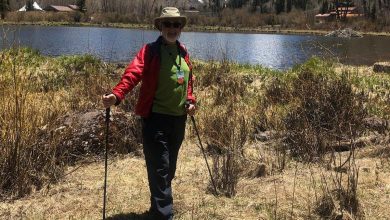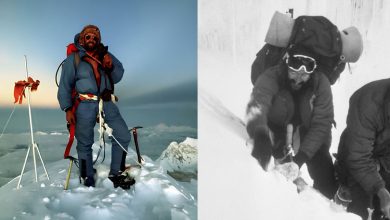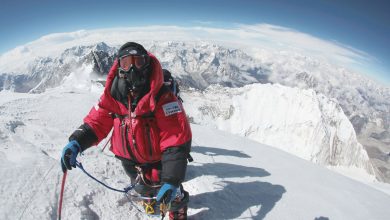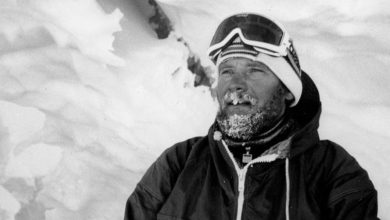Ueli Steck: Swiss Mountain Climber’s Fatal Fall From Nuptse
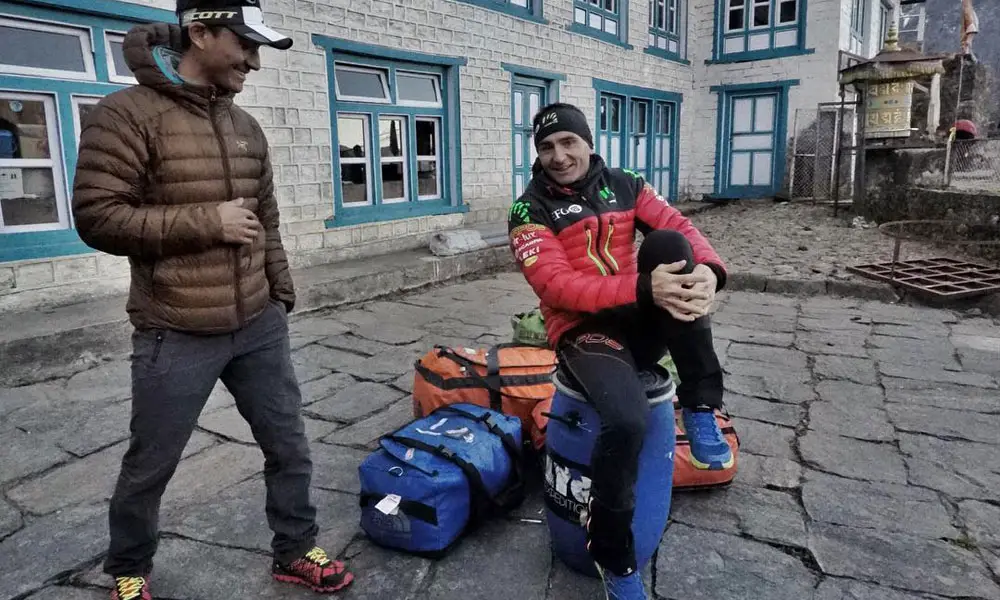
Mountain Climbing is one of the world’s most daring and adventurous activities. Nepal, being a mountainous country, features a wide array of snow-capped peaks in its Himalayan Range. With this, the country is one of the most chosen destinations for mountain expeditions and trekking packages. Mountain climbing is, however, not an easy feat – we have already experienced the deaths of hundreds of climbers in the high-altitude peaks. One of them is Ueli Steck.
Ueli Steck was a professional Swiss Mountain Climber whose name resonated with awe and inspiration to several young climbers and generations. Nevertheless, he became one of the legendary figures in the mountaineering industry, leaving an indelible mark on the history of high-altitude climbing.
Starting his career at 17, he cherished his dream career for over two decades, having climbed Mount Everest and other peaks. He successfully scaled several mountains like Eiger, Mount Everest, and others. In this blog, we will discuss more about Ueli Steck. At the same time, we will learn more about his childhood, career accolades, and the cause of his death.
Steck’s death is one of the mysterious incidents that happened in Nuptse. So, reading this article might help you wipe out the blurry information about him. Let’s explore about Ueli Steck in depth here:
Who Was Ueli Steck? Background Explored
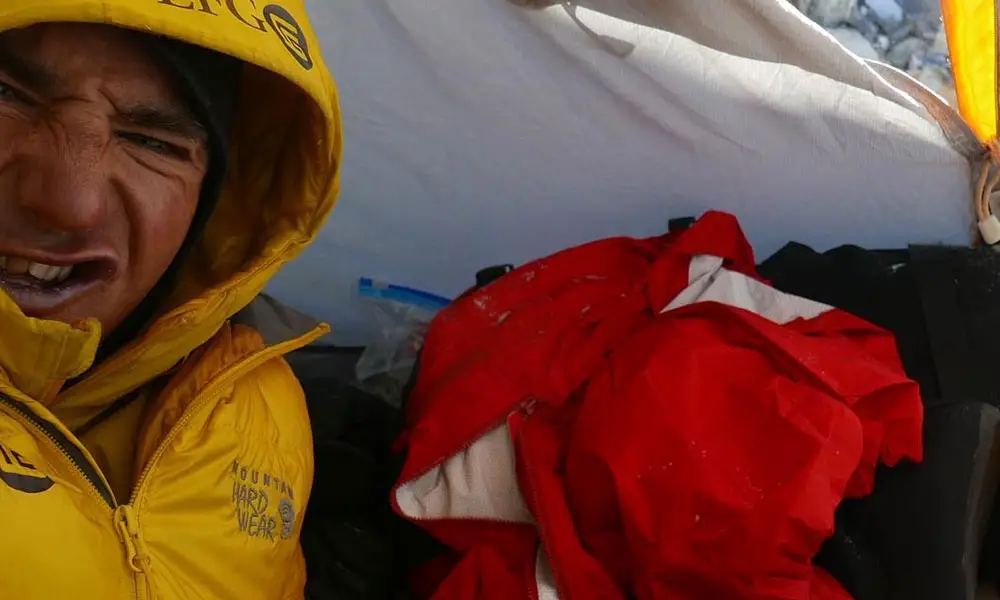
Ueli Steck was a Swiss mountain climber known for climbing Mount Annapurna alone. He opted for the route via Annapurna’s South Face and set the record independently on the North Face trilogy in the Alps. He received two Piolet d’Or awards in 2009 and 2014 for his contributions to the mountaineering industry.
Ueli Steck was a professional climber who already had the successful ascents of Mount Everest in his account. Unfortunately, he died on April 30, 2017, after falling from around 1,000 feet below the summit of Nuptse. It was an acclimatizing climb for an attempt on the Hornbein route on the West Ridge of Mount Everest. Steck attempted the climb without supplemental oxygen.
What Awards Did Ueli Steck Get Honored With?
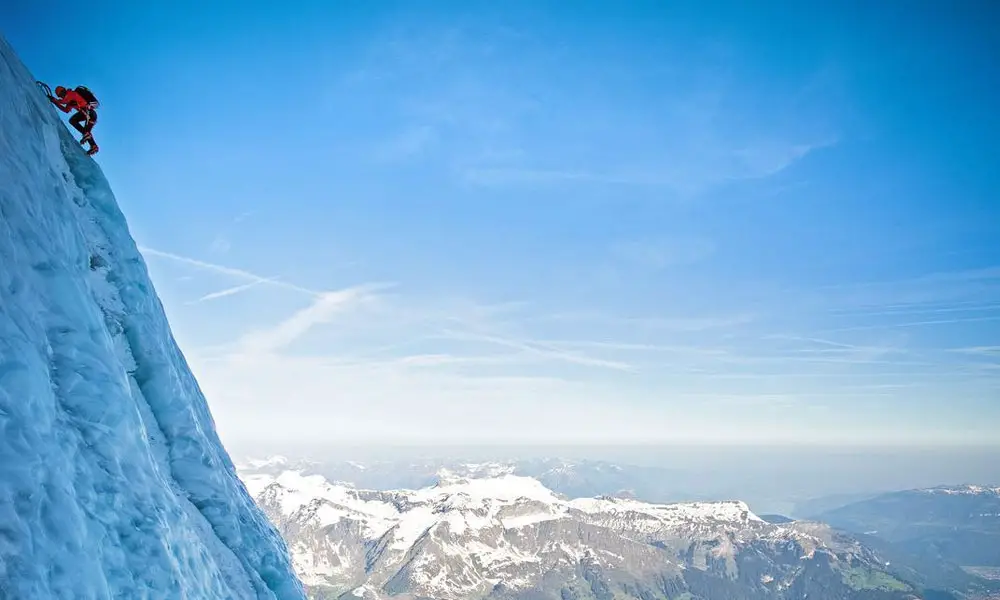
Here are the lists of awards that Ueli Steck got honored with:
- 2008 Eiger Award for his alpinistic performances
- 2009 Piolet d’Or for his new route on Tengkampoche north face with Simon Anthamatten
- 2010 Karl Unterkircher Award for his climbing versatility
- 2014 Piolet d’Or for his solo ascent of Annapurna’s south face
- 2015 National Geographic Adventurer of the Year
- 2017 The George Mallory Award – Wasatch Mountain Film Festival
Ueli Steck Mountaineering Career
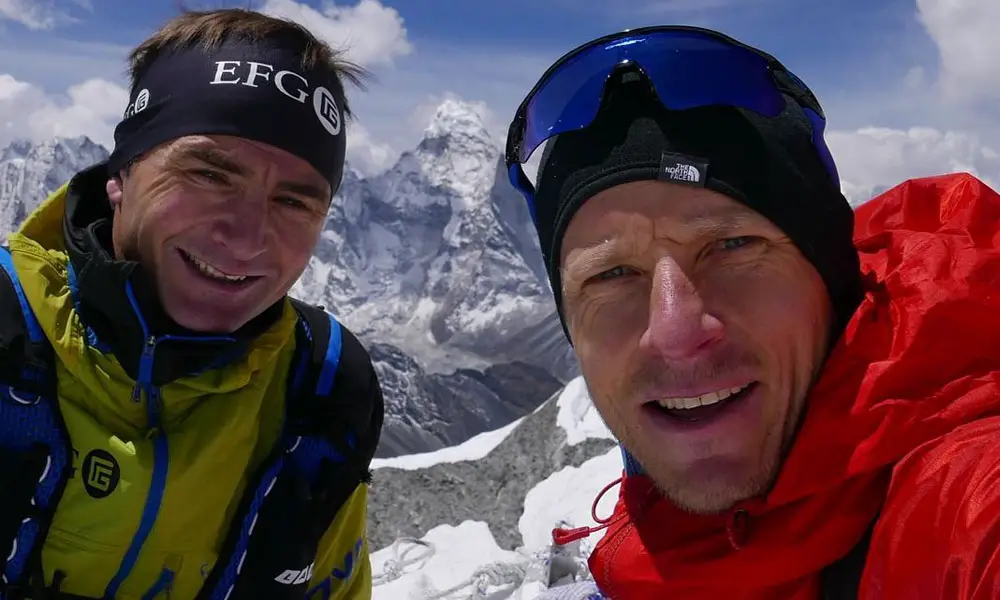
Ueli Steck’s mountaineering career began when he was just 17 years old. Passionate by nature, Steck was fond of mountains since a young age. Later, he also attended the 9th Difficulty Rating (UIAA) in climbing. A year later, he started his career; he successfully scaled two challenging peaks, including the North Face of the Eiger and the Bonatti Pillar in the Mont Blanc massif.
It was June 2004 when Steck collaborated with Stephan Siegrist and successfully climbed the Eiger, Monch, and Jungfrau in 25 hours. It was one of the most daring adventures any mountaineer has ever taken.
Similarly, in 2005, he successfully claimed the ‘Khumbu-Express Expedition.’ It acclaimed his success and brought him to the limelight as one of Europe’s top alpinists. It featured his solo ascent of the north wall of Cholatse (6,440 m) and the east wall of Taboche (6,505 m), demonstrating his unmatched skill and courage.
Speed records were one of Steck’s quests online, which he initiated in 2007. He climbed the North Face of the Eiger at just 3 hours and 54 minutes. It was not enough for him – he returned stronger and scaled the North Face of the Eiger at just 2 hours and 47 minutes, beating his previous record.
Climbing the peaks from the Himalayas is not an easy feat. Factors including extreme weather conditions, high altitude, and treacherous landscapes influence the climb. It was also part of Steck’s mountaineering career. In May 2008, Steck faced a harrowing situation while climbing Annapurna. He abandoned his expedition due to the threat of avalanches.
But in the meantime, he climbed to assist Spanish Climber Iñaki Ochoa de Olza, who had collapsed. Despite Steck’s help, Ochoa de Olza tragically passed away due to delayed medical assistance.
Steck received the inaugural Eiger Award in 2008, cemented him as one of the climbing legends thanks to his remarkable mountaineering achievements.
He also independently climbed the Lafaille route on the South Face of Annapurna without any guided package. He became the first person to scale Mount Annapurna via that route and earned his second Piolet d’Or, a prestigious mountaineering award.
In the 2014/15 winter, Steck collaborated with Michael Wohlleben and scaled the three north faces of the Tre Cime di Lavaredo/Drei Zinnen in just 16 hours. It not only showcased their professional climbing skills but also their incredible stamina, skills, and endurance. Similarly, in the summer of 2015, he climbed all 82 summits in the Alps higher than 4,000 meters in just 62 days.
Steck set a new record for the North Face of the Eiger the same year. He climbed the peak in 2 hours, 22 minutes, and 50 seconds. Similarly, in 2016, Steck added one of the most notable climbs to his account – he and David Gottler discovered the dead bodies of Alex Lowe and David Bridges, who died of an avalanche in 1999 in an attempt to historic ski descent on Shishapangma.
Ueli Steck Age Explored | How Old Was He When He Died?
Ueli Steck was 40 years old when he died falling from Nuptse. He was born on the 4th of October 1976 in Langnau in Emmental, Switzerland. He was a Swiss National with many climbing records. Unfortunately, he died on April 30, 2017. He had his burial ceremony initiated in Tengboche Monastery, Khumjung, where his dead body is laid to rest.
Ueli Steck was born into a family of Copper Smith in Switzerland. His father used to work as a coppersmith in the town of Langnau in the Emmaluel Valley in Switzerland. He was the son of Max Steck and Lisabeth Steck and grew up in a white family in Switzerland.
From a young age, Steck was rich in sports and was a hockey player. He even joined his father on ski tours and gained knowledge of snow and steep landscapes. Upon passing his young age, he started working out as a carpenter. He lived in Ringgenberg near Interlaken, Switzerland.
Talking about his personal life, Ueli Steck was happily married to his wife, Nicole Steck.
Ueli Steck’s Last-Minute Decision to Climb Nuptse Alone and Fatal Fall
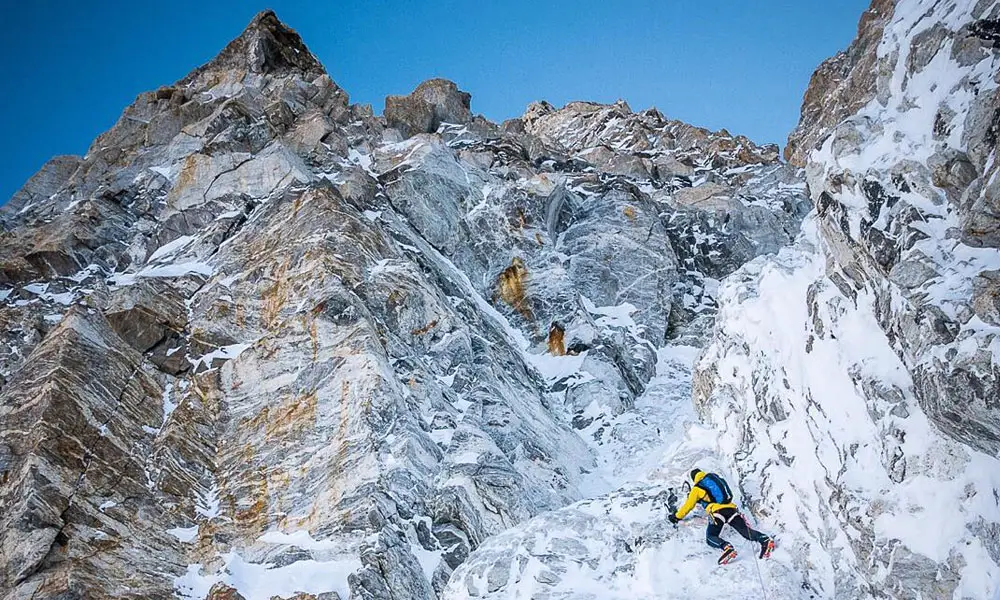
Without proper preparation, mountain expeditions are always dangerous. And it was the same reason that took the life of Ueli Steck. Despite being one of the professional climbers in the mountaineering industry, the lack of preparation and the last-minute decision to climb Nuptse became the cause of his demise.
It was the same last-minute change in decision just one day before his fatal fall, based on the plan to tackle Nuptse. Before Ueli Steck made his final summit, he texted his climbing partner, Tenji Sherpa, and notified him about his abrupt change in plans. Tragically, he lost his life, and his dead body was found between Camp 1 and Camp 2 in the Western Cwm. It is one of the most dangerous parts of any type of climbing, whether solo or guided expedition.
The precise cause of Ueli Steck’s fall from Nuptse remains a mystery, shrouding his final moments in uncertainty.
When Steck texted Tenji Sherpa, he (Tenji) was surprised. He mentioned that he was shocked when he received a message that Steck was trying to climb Nuptse, a 25,791-foot mountain just before Mount Everest. He also had decided to return to the Base Camp to meet his friends from Switzerland.
The expedition Ueli Steck chose was to summit the peaks, including Mount Everest and Lhotse, without any oxygen supplements. Later, the plan changed as Steck and Tenji Sherpa included Nuptse in the initial days of their climb. As soon as Tenji received the text from Steck, he replied, ‘Are you going to climb alone or with friends?’ But Steck never replied to his question.
On April 30, 2017, Steck was seen praying at Base Camp and waiting for Tenji Sherpa. After the climb started, the tragic mishap occurred, and many of the fellow climbers saw the climber falling from approximately 3,000 feet down Nuptse’s North Face. They immediately recognized it was Ueli Steck and discovered his body in the Western Cwm.
The trail comprised a mix of snow and ice sheets, which might be the probable reason for his fall. However, no one knew how he missed the balance and what caused the fatal demise. Ueli Steck, who was 40 at his death, had great preparation and strategic plans. He spent a few weeks training in the high-altitude trail, running up to 20,000 feet in the Khumbu Valley. Talking about his training, he mentioned, ‘I just feel stronger. My heart rate, I can push a lot more.’
However, his plan never stuck as expected, meeting an unfortunate demise.
Nevertheless, climbers take his last expedition as a culmination of his brave and daring spirit. His climbing legacy and unwavering passion for the mountains led him to be what he was at the time.
His tragic fall on Nuptse is a stark reminder of the perilous nature of high-altitude solo climbing. Yet, Steck’s influence endures through Tenji Sherpa and the countless climbers he inspired. Moreover, his motivation to return to Everest without oxygen epitomizes his dedication to the essence of climbing itself. It also shows he was determined to set a record for climbing Mount Everest, Nuptse, and Lhotse without any oxygen supplements.
See also :
- Marco Siffredi: Fateful Last Descent From Everest On Snowboard
- Sibusiso Vilane: First African To Climb Mount Everest
- Dudley Wolfe: The Fall Of American Socialite During K2 Expedition
- Lydia Bradey: First Woman To Climb Mount Everest Without Oxygen
- Jim Whittaker: First American To Climb Mt Everest
- YoungMin Ham: South Korean Pilot’s Fatal Paragliding Accident In Pokhara
How Did Ueli Steck And Tenji Sherpa Meet?
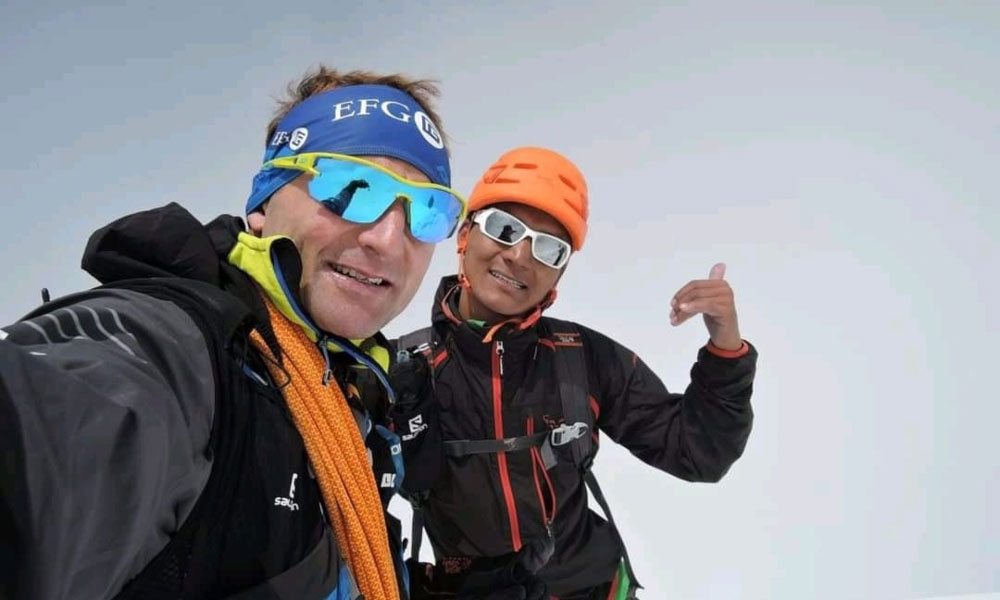
Tenji Sherpa was approached by Ueli Steck in Kathmandu in 2017 after planning for the Everest-Lhotse Expedition package. After a few weeks, they flew to Lukla and prepared for the forthcoming expedition.
On April 16, 2017, Steck and Sherpa carried their tents and other essential gear from Everest Base Camp to Camp 2. At the same time, Sherpa suffered frostbite on two fingers and had to rest. Similarly, Steck also caught the fever and came down to take shelter at a lower altitude. Then, they returned to Lukla via helicopter and rested for three days.
Later, they flew to Everest Base Camp again and initiated their climb. Steck carried out his solo climb toward the West Ridge and previewed the part of their route.
On April 30, Steck left Camp 2 and climbed toward the glacier with a French climber named Yannick Graziani. Steck diverted his route toward Nuptse; however, on the way, he broke off to the right side of the steep landscape and fell from a point about 1000 feet below the summit.
View this post on Instagram
Frequently Asked Questions
Who Was Ueli Steck?
Ueli Steck was a Swiss rock climber and alpinist who successfully climbed Mount Everest. He is widely acknowledged for his speed records in mountain climbing.
How old was he when he died?
Ueli Steck was just 40 years old when he died in the Himalayas of Nepal. It was one of Nepal’s most devastating events in mountaineering history.
What were some of Ueli Steck’s notable achievements?
Ueli Steck was known for several impressive feats. His speed records on iconic peaks, including the Eiger’s North Face, Matterhorn, and the Annapurna South Face, are unmatchable feat. He is also the winner of the prestigious Piolet d’Or award twice.
How did Ueli Steck die?
Ueli Steck died on April 30, 2017, after falling from Mount Nuptse in the Himalayas. He fell from approximately 1,000 feet below the summit of Nuptse.
What is the Eiger North Face, and why was Ueli Steck famous for it?
The Eiger North Face is a legendary and extremely challenging climbing route in the Swiss Alps. Ueli Steck gained fame for his record-breaking speed ascents of this route, earning him the nickname “Swiss Machine.”
